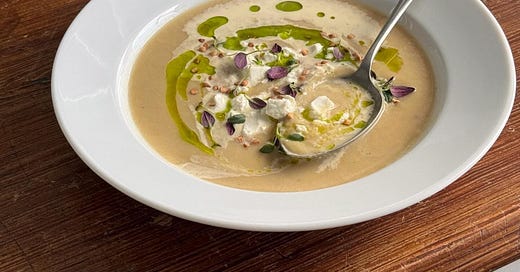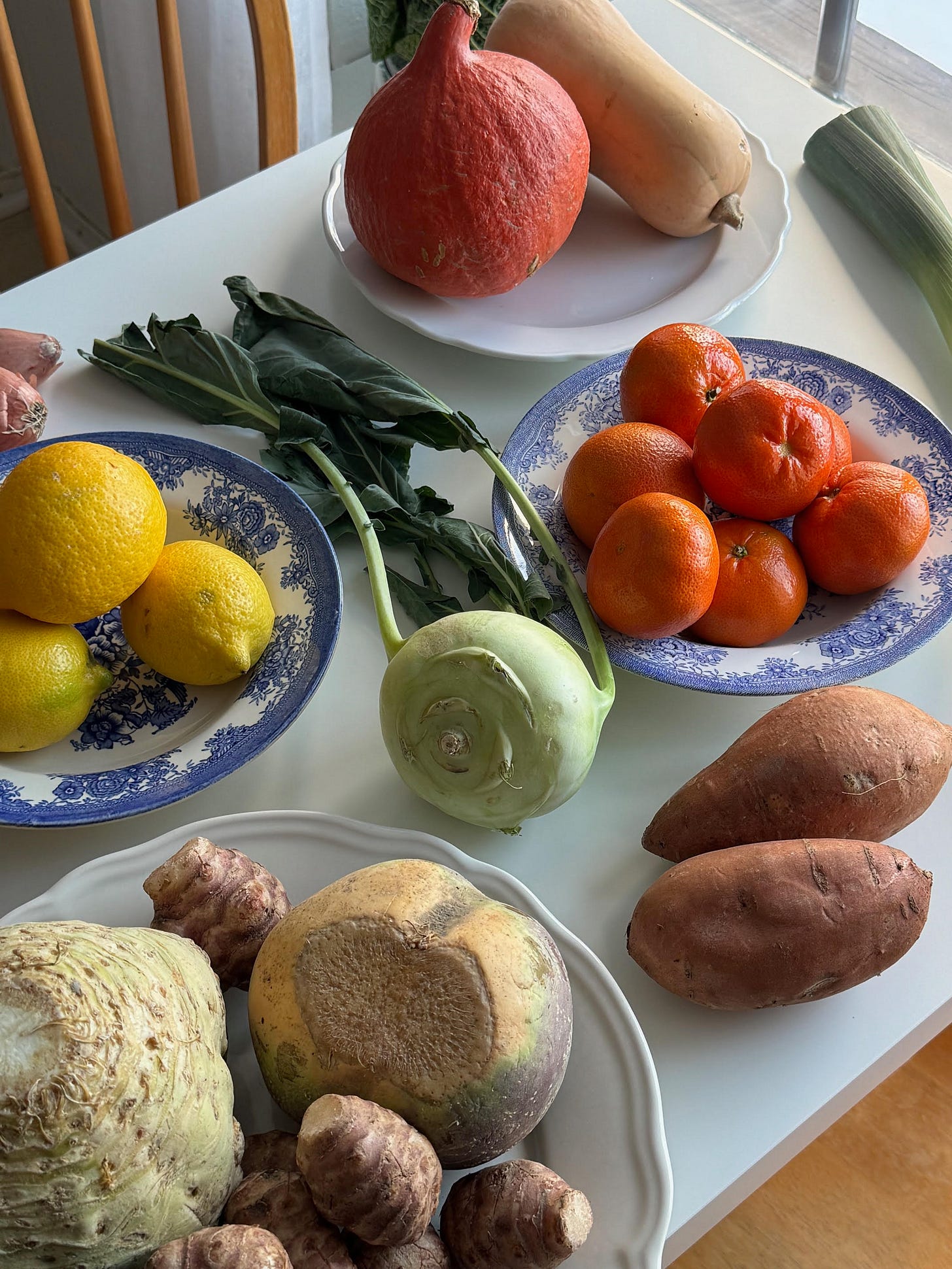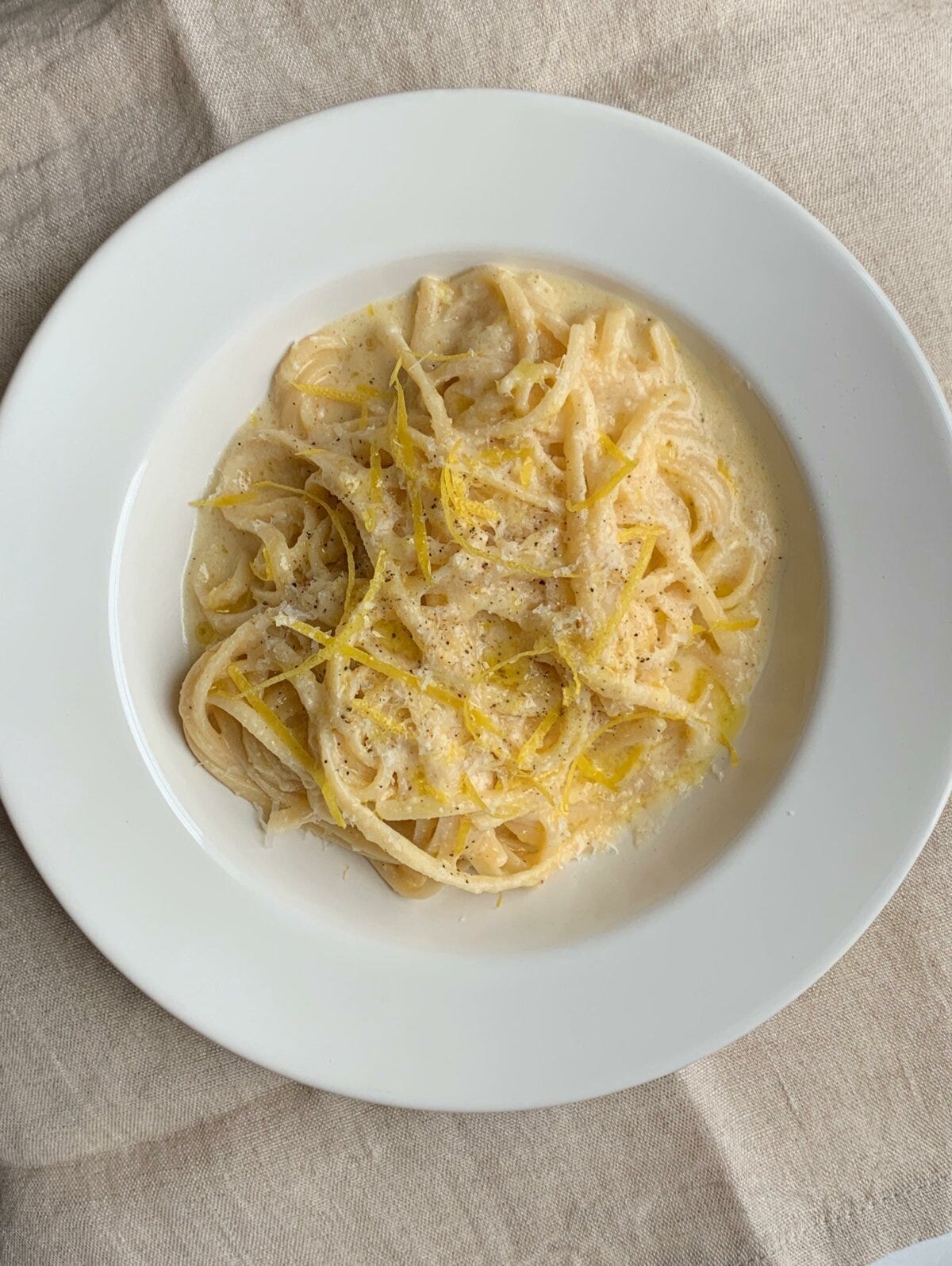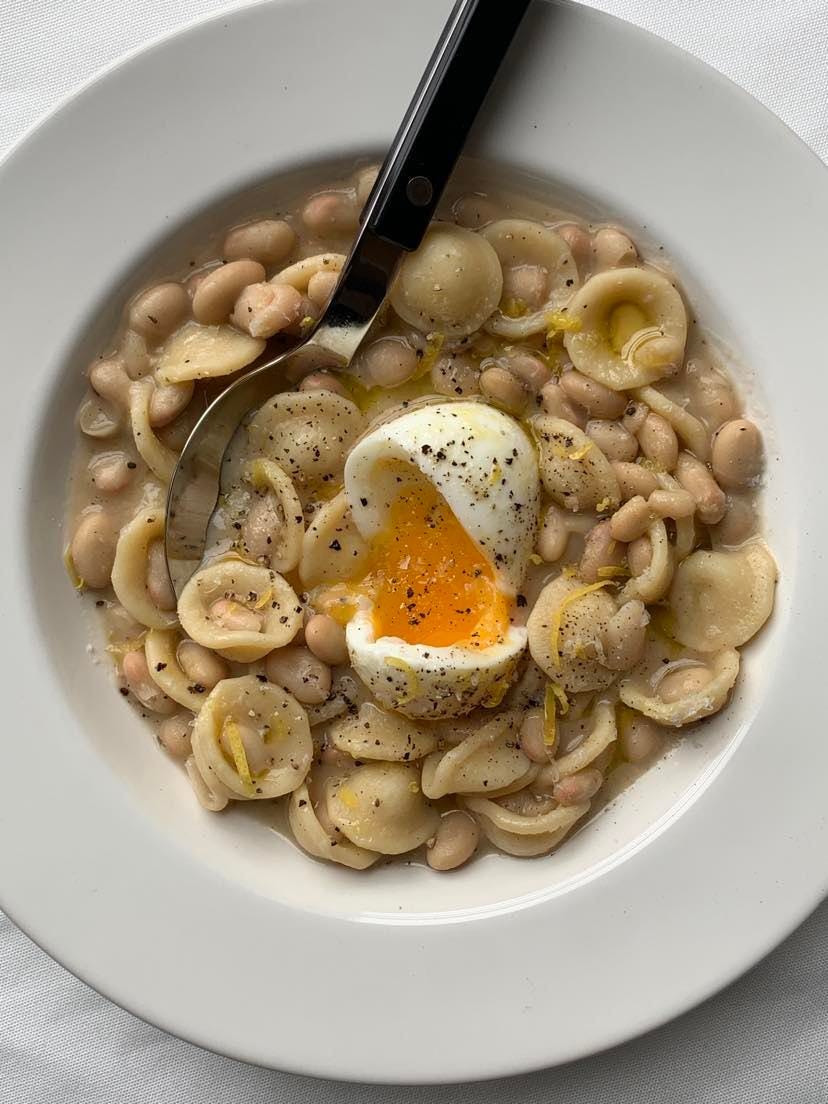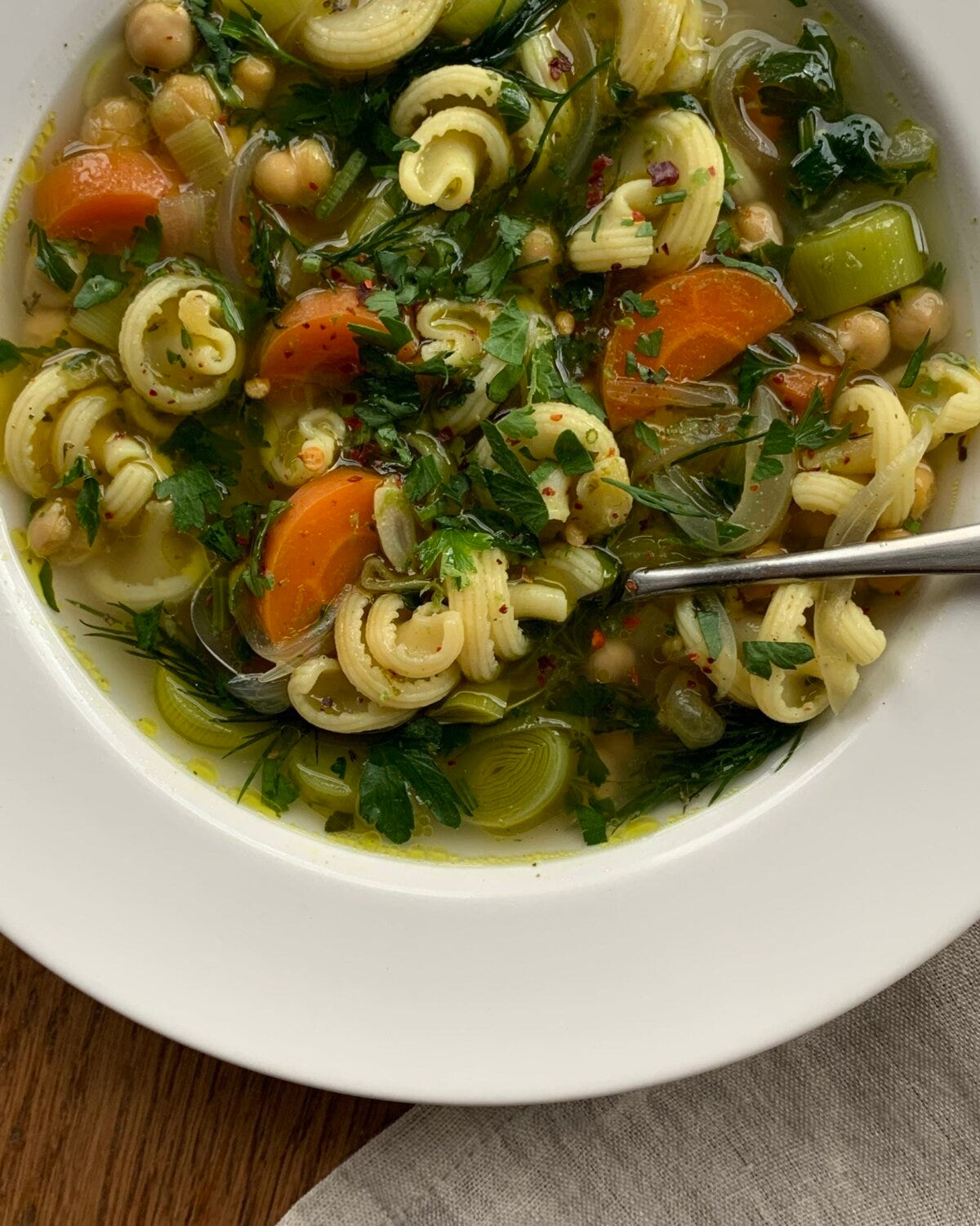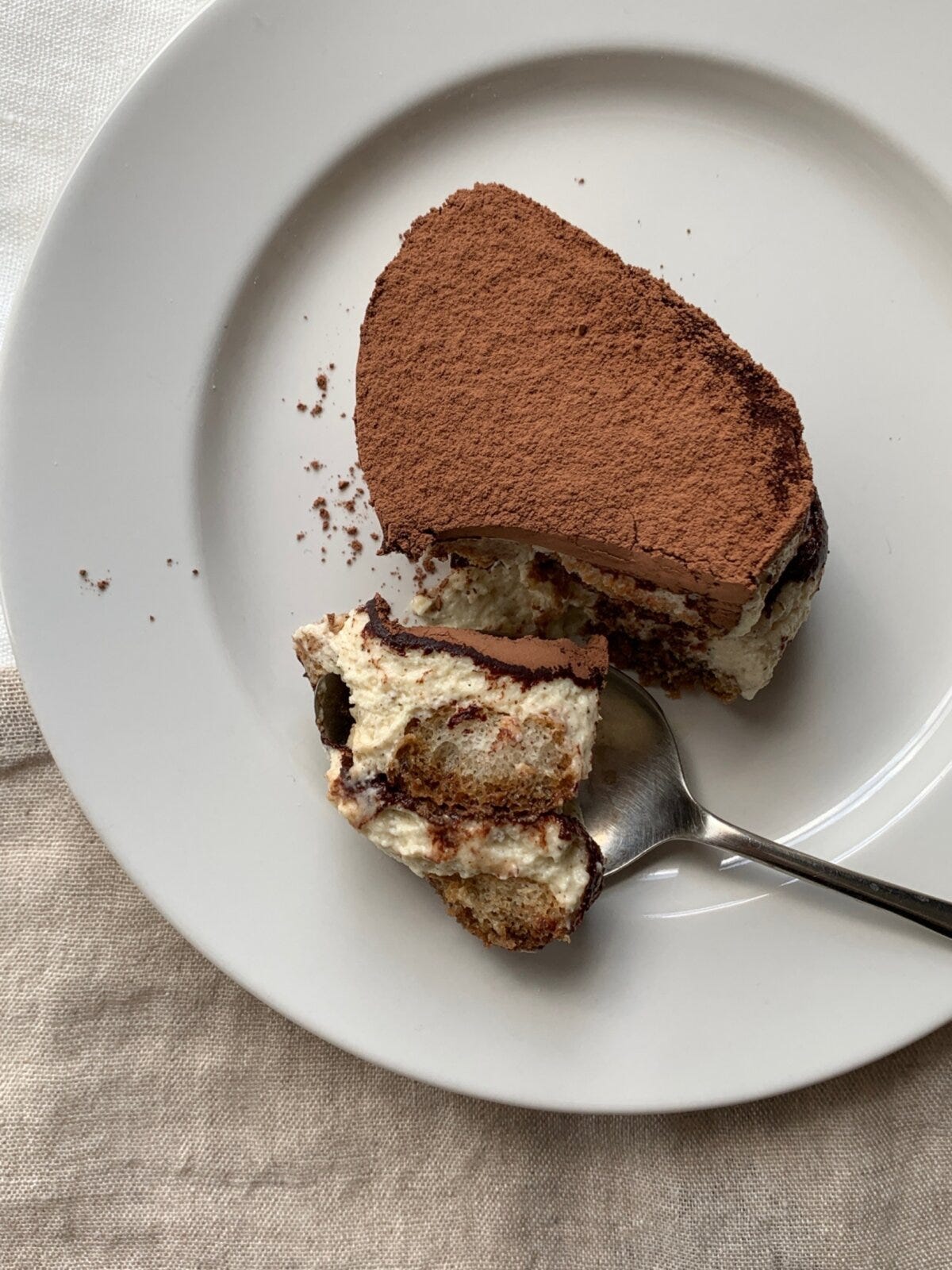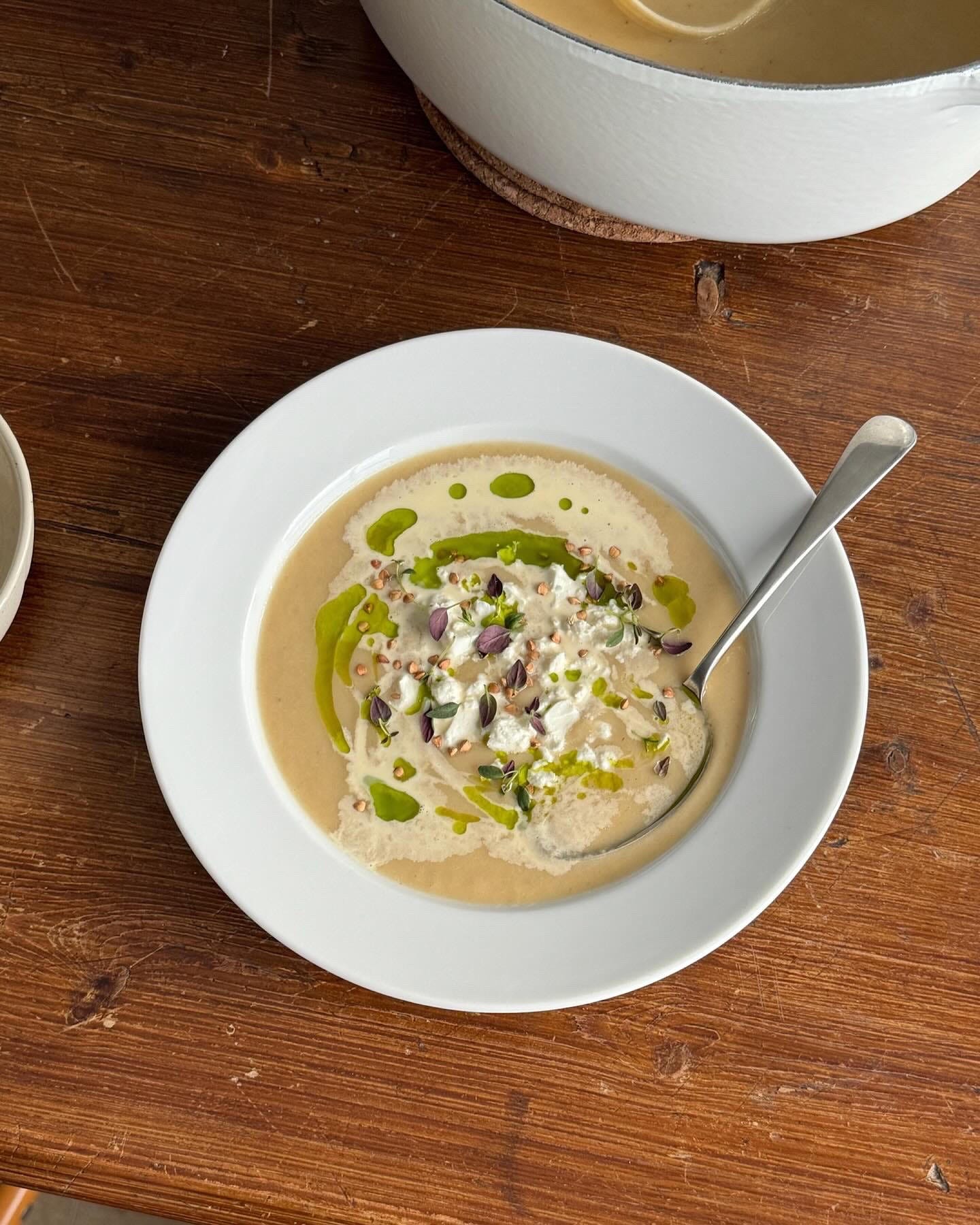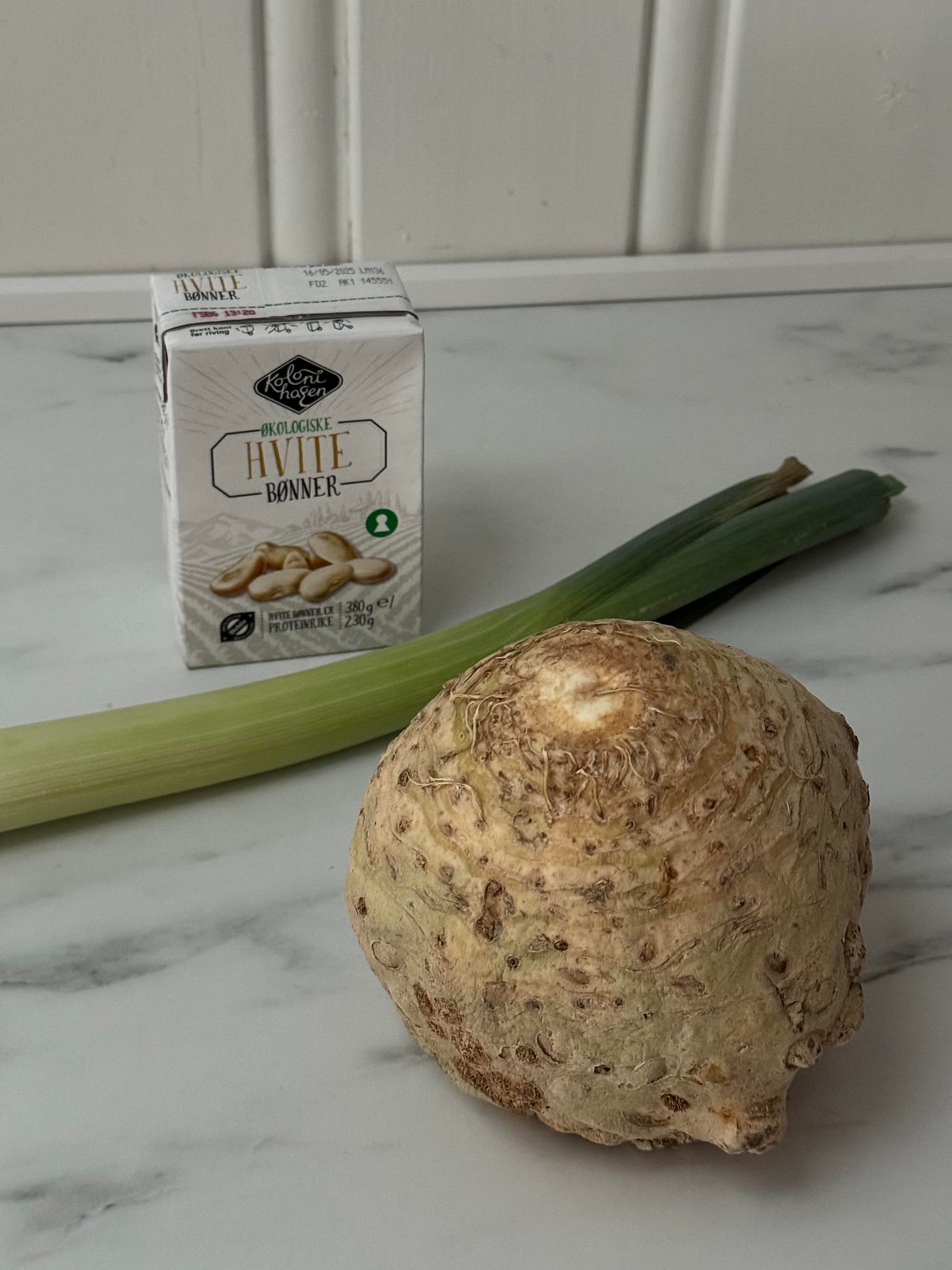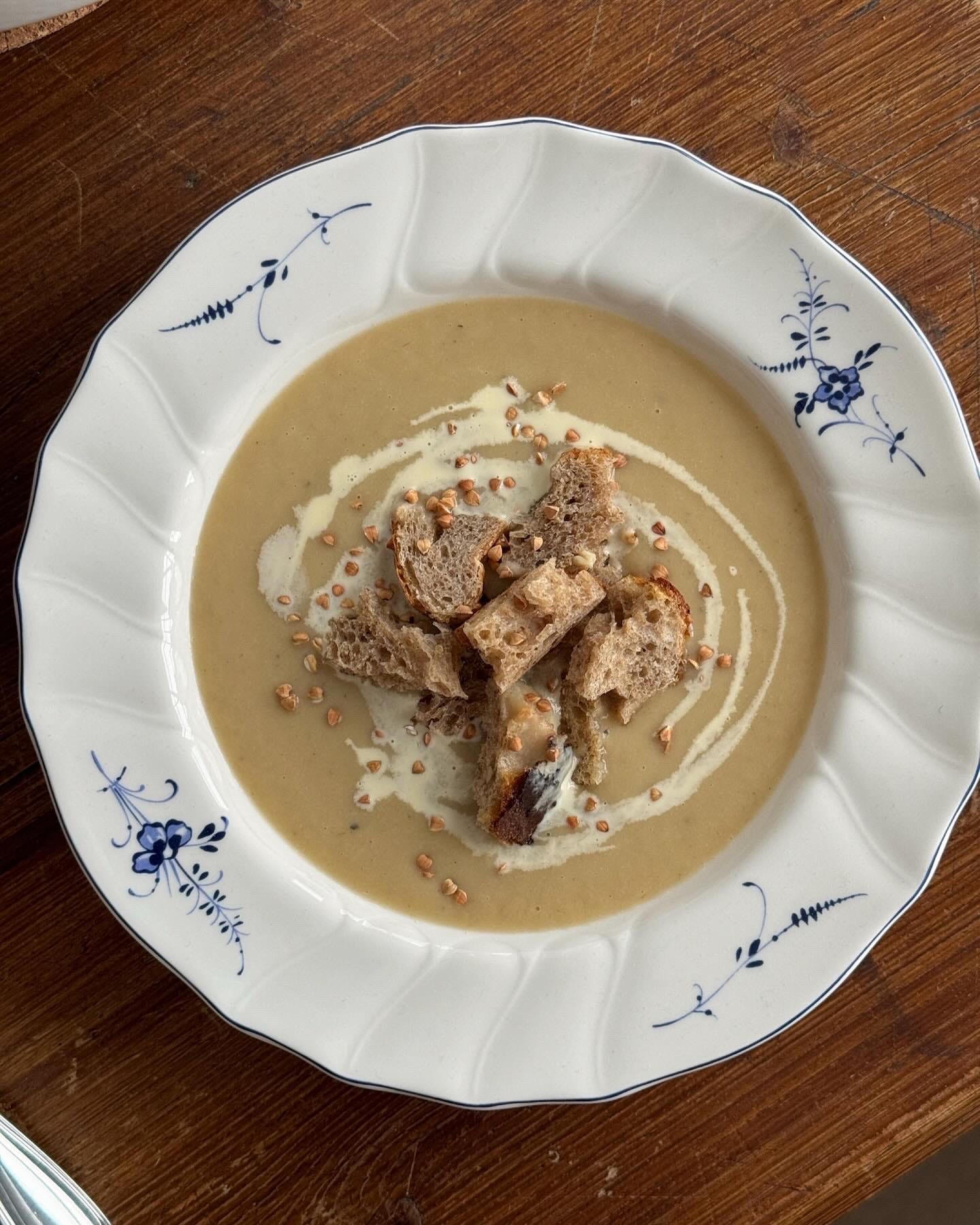Allô! 👋
Hello! Welcome to the good food at home newsletter. If you're a new subscriber and would like to read the previous newsletters, you can click here to find them. If this newsletter has been shared with you and you'd also like to subscribe, feel free to hit the button below!
Happy New Year! Welcome to the first of 2024’s newsletters — and welcome to a new format!
I am pleased to report that, so far, my year’s been off to a quietly productive start. If you’ve been reading me or following me for a while, you’ll know that until relatively recently I was living in Norway, happily learning to grow produce (as one does in pandemic times), and generally just enjoying Scandinavian living, when suddenly came the announcement that I’d be moving to France. And then to England. And then to the US. All in the span of one year: 2023.
Well, I’m back in Norway (for now), and 2024 has thus far consisted of slowly trying to get back into the swing of nordic things.
Behind the scenes, things are busy and exciting (hence a bit more quiet on the public front — I look forward to sharing more with you as the year progresses!) all while advancing at a slightly calmer pace than I’d like. Oh well. This time of year requires it.
Although, speaking of exciting things that have kept me busy, you may be wondering why I’ve made the switch over to Substack. It took me much too long to transfer the archive, but I think the decision was well worth it. The simple matter of it all is that there are too many of you now. My old platform couldn’t handle the volume (cue A Few Good Men quote and/or the Seinfeld meme referring to it)! Honestly, what a delightful problem to have.
Do feel free to let me know what you think about the change, by the way. While I myself am still adjusting to the new look of the newsletter (find the old archive here), I am excited about many of the new features that come with this transition. Interacting with you has never been easier (you can now leave comments on each issue!), and I am quite keen to see where this next chapter takes us all. After all, without you, what is the point of writing a newsletter?
So, from the bottom of my heart, allow me to profusely thank you. Thank you for being here, for cooking with me, for reading all the random thoughts and recipes I happen to share along the way, and for rendering my old newsletter platform incapable of keeping up with your ever-growing numbers. It means more to me than words can convey, and I truly am deeply grateful for each and every one of you.
You stoke the fire that keeps me sharing and doing what I love to do, and I’m not sure there are many greater gifts than that in life. So for that, a thousand times thank you.
In this year’s first issue, you'll find a round up of 2023’s newsletter-exclusive recipes, as well as a soothingly smooth celeriac soup with its accompanying vibrant leek oil. To me, the dish almost feels like a celebration — of my creativity coming back (I was stuck in a rut), of the pleasure I get out of cooking with slightly unpopular and/or unusual produce, of the days getting longer (we will officially be halfway through winter on February 3rd and I can’t wait to take photos of food in proper daylight again), and of a return to routine after a month of readjusting to yet another international move. Truly, it feels good to be back.
That being said, thanks again for being here — and I hope to chat with you in the comments soon!
Sending cheerful warmth and lotsa love,
👋simone
p.s. as this year is a leap year, permit me to also wish you a very happy extra long February!
a year in review
✨
Normally I would do this in December, but unfortunately I was too busy being sick (and spending much-anticipated time with my family — I hadn’t seen them all year!) to send out a newsletter last month. I do hope you’ll forgive me for the delay and, more so, I hope you’ll enjoy.
january
an invigorating fennel grapefruit salad
a ribollita-ish dish
a luscious lemon linguine
february
parmesan & lemon white bean pasta (three ways)
march
a pear & hazelnut chocolate cake
the weekday bowl
cheese & herb scones
may
a pea salad mountain
a wild garlic spanish omelette
july
samphire & apricots with burrata, basil + lemon
romano beans & toasted pine nuts
zucchini blossoms with a whipped herb cream
august
the caprese(ish) dish
a gooseberry “fool”
beans, more ways than one
september
october
And there you have it! Every newsletter-exclusive recipe from 2023. There are more recipes across the website and my Instagram posts as well, but it’s always nice to have a little inventory in place. So here they all are, neatly catalogued for your pleasure of cooking and ease of finding (and for mine too, to be honest).
leek, celeriac & white bean soup 🥣
Celeriac is one of those winter wonders that, along with the humble kohlrabi and the offbeat sunchoke*, leaves many of us baffled as to what on earth compelled us to purchase such a confounding curiosity.
Having experienced this befuddlement many times myself, I’ve come to recognise the feeling as a mere signal of unfamiliarity with a potentially delicious food item, rather than a potentially inherent failing on the ingredient’s part. Basically, it’s not the food, it’s you.
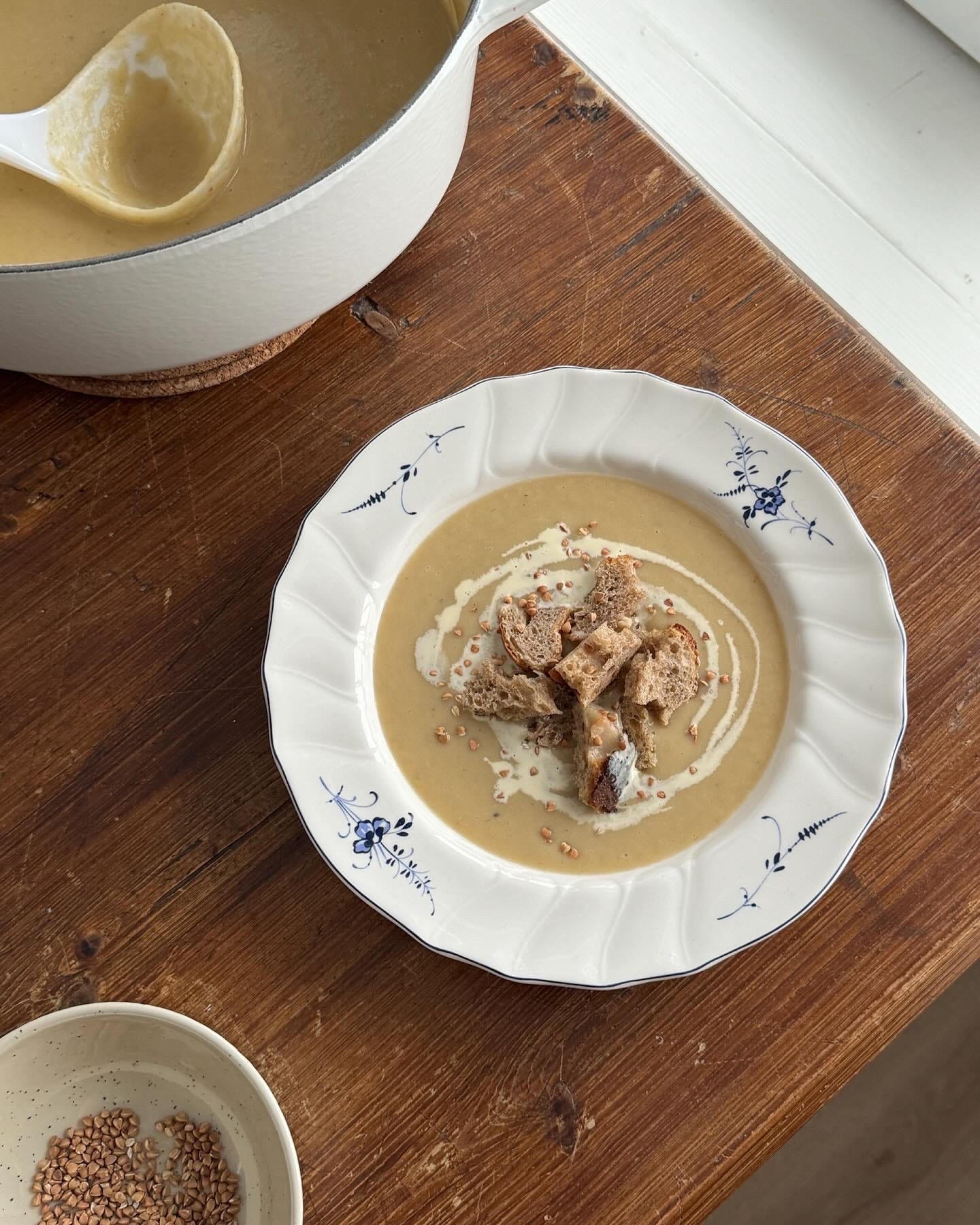
Luckily for us home cooks, unfamiliarity is just another way to say, “hey, that’s new to me” and, I don’t know about you, but I think new things are exciting (especially when it comes to good food)!
All that to say, I hope this recipe will entice you into picking up literally extraordinary ingredients and — most importantly, if you’ve already got a lonesome and forlorn celeriac beckoning for attention — I hope it can help assuage any potential feelings of buyer’s regret (or, more aptly in this case, cook’s remorse).
•••
LEEK, CELERIAC & WHITE BEAN SOUP
with a leek & thyme oil drizzle
serves 4-6, depending on appetites and serving sizes
INGREDIENTS
• 1 small or ½ large celeriac
• 1 medium-sized leek
• a ∼380g box or tin of white beans (or ∼230g cooked beans, once drained); cannellini, great northern, navy, and lima/butter beans are all good options here
• fresh thyme
• 1 vegetable or chicken stock cube
• ∼1L (ideally just-boiled) water
• heavy cream (∼37% fat content)
• apple cider vinegar
• toasted buckwheat (or anything else small and crunchy that you find tasty — e.g. toasted seeds, chopped nuts, savoury granola, or roasted legumes)
• stale sourdough bread
• feta or another creamy, crumbly cheese (Optional)
• extra virgin olive oil
• sea salt
• freshly cracked black pepper
note: feel free to skip the stock cube + water if you’ve already got some homemade broth on hand!
METHOD
1. On the stovetop, bring a large pot or dutch oven to a medium heat. While it preheats, thinly slice a small (or half of a large) well-scrubbed celeriac into bite-size tiles, around 4-5cm/∼1″ wide and tall, and 3-4mm/∼⅛″ thick.
2. Drizzle about 1-to-2 Tablespoons of olive oil into the now-hot pot. Add in the sliced celeriac. Stir well with a wooden spoon, so as to coat every piece, and leave to sizzle (continuing to stir occasionally) while you tend to the leek. When the celeriac catches, season with salt, and continue cooking until tender and well caramelised.
3. Slice the root off a medium-sized leek, then remove its outermost papery layer. Separate the leek into two parts: the white and pale green stem, and the dark green layered leaves. Thinly slice the pale leek stem into coins, roughly 1cm/∼⅓″ thick, and clean them well in cold water before adding them to the pot along with the now-fragrant and well-coloured celeriac. Stir through well.
4. Drain a ∼380g can or tin of white beans into a colander and rinse the beans well, until no more foam appears. Add the beans to the pot, along with a stock cube and roughly 1 litre of water (just boiled from the kettle, if you want to speed things up). Deglaze the bottom of the pot with the water, scraping its bottom well with the wooden spoon, then pop in a large sprig or two of fresh thyme and season well with salt and pepper. Leave to gently simmer, uncovered, for 25-35 minutes.
5. Optional. While the soup simmers away, make the leek oil: roughly chop the dark green leaves leftover from the leek, taking care to remove any extra tough or yellowing bits, then clean them very well in cold water until you are sure no sand or grit remains between any of the layers.
Add the cleaned leek greens to a blender or to the mixing beaker of an immersion blender, along with some fresh thyme leaves (roughly 1/4 the amount of the leek — go with your gut). Add just enough olive oil to blend, and whizz until mostly smooth.
Transfer the lovely green mush to a small pot, add in an extra Tablespoon or two or olive oil, and warm it over medium-low heat for no more than 5 minutes, stirring well as it heats, until the blend juuust starts to bubble. Remove from the heat immediately.
{ what we are doing here is essentially quickly blanching the greens in oil so as to extract their flavour and colour all while preserving both their fragrance and vibrance }
Double strain the mixture by pouring it through a fine mesh strainer positioned atop an even finer one (I used a cheese cloth) that you have previously placed in a small funnel perched atop a measuring cup. Do not be tempted to push or force the mash through. If left alone, only the infused oil should collect into the container below (trying to speed up the process by squishing the mash down will only result in the mixture’s water content making its way through the sieve and into the oil — we do not want that).
You can store any leftovers in a small airtight jar or container in the fridge for up to 1 month.
6. Once the soup has simmered for 25 minutes, taste it. Leave to simmer a little longer (up to 35 minutes total) and/or adjust the seasoning of salt and pepper accordingly. Season with a micro-splash of apple cider vinegar, taste, and add a tiny splash more if desired.
At this point, the soup could be basically be served as is and would be quite delicious. Or you could mash a portion of it with a wooden spoon to thicken it slightly while keeping it chunky. Delightful!
If, however, you are in the mood for something as smooth as pictured above, please keep reading.
7. Add a splash of cream, to taste, to the soup (you may very well choose to add none). Blend the soup until very smooth. Taste again, adjusting cream, vinegar, salt and/or pepper as desired.
8. Serve the steaming hot soup into bowls. A bit of salt and pepper is fine for most intents and purposes, but I find that often the garnish is what makes a smooth soup truly shine.
If using cream in the soup, let people know what they’re eating by drizzling a little on the soup! If using the incredibly flavoursome leek thyme oil, drizzle some onto the soup too. Likewise, garnish with a few fresh thyme leaves to mirror the thyme in the dish.
Lastly, finish with a bit of crunch in the form of toasted buckwheat and/or stale sourdough bread, cut or blitzed into crumbs (anything crisp and crackly should work pretty well here so, in addition to the suggestions in the ingredient list above, do also consider small pieces of bacon, a modest pinch of crispy fried onions, or a light crackling of roast chicken skins).
A little crumbling of feta is also very welcome, but I’ll leave the details up to your tastes and the contents of your kitchen.
A real midwinter treat, best enjoyed in good company at a nicely set table — especially by candlelight — with some gentle music on in the background (pro tip: for extra cosy and slightly cheesy vibes, throw on a crackling fireplace video too).
last, but not least:
the public health corner 🔗
In case you didn’t know, public health is my jam (more on that here and here) — it informs everything I do! And, as always, I like to leave you with a few parting links relating to the topic, as food for thought:
📺 ONE VIDEO
Here’s Why You’re Addicted to Ultra-Processed Food | Chris van Tulleken (TEDxNewcastle)
🗒️ ONE ARTICLE
The $10 trillion benefits of overhauling our food system (The Verge)
🎧 ONE PODCAST EPISODE
How has a small island become the nation with the highest rate of obesity? (The Food Programme)
📘 ONE BOOK
The Way We Eat Now: How the Food Revolution Has Transformed Our Lives, Our Bodies, and Our World, by Bee Wilson (Basic Books)
p.s. I usually have a hard time just picking one of each so, in case you're interested, there's plenty more where that came from!
That's all from me this time! Thank you for being here, and see you again very soon 💛


